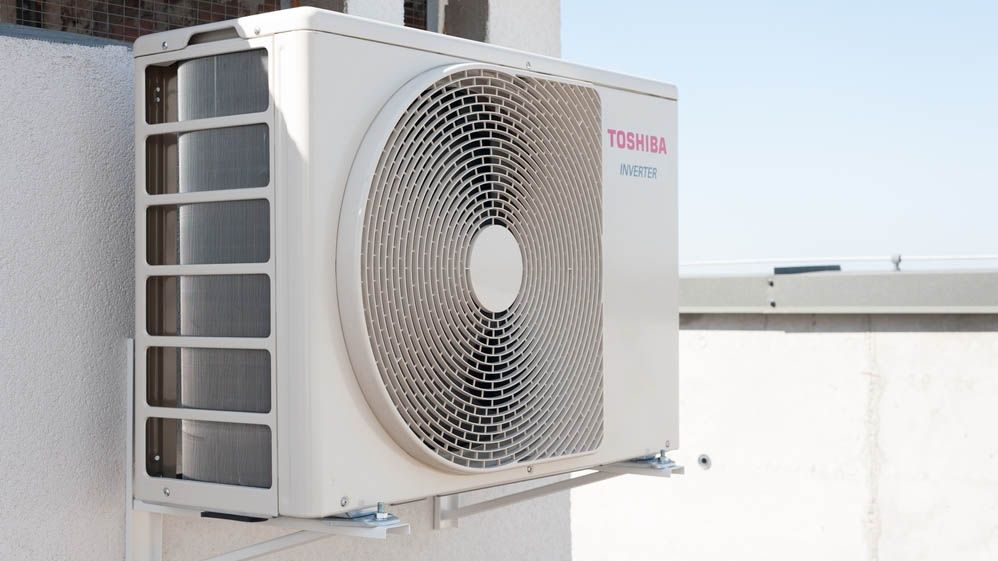
Lviv, Ukraine - 09.10.2021: Toshiba air conditioner outdoor unit installed on the wall
Mold could be lurking in an unexpected place within homes, posing health risks that many homeowners overlook. While areas like bathrooms and basements are commonly associated with mold growth, the air conditioning unit, along with its ducts and vents, is often ignored. According to Jeff Berzolla, a home maintenance expert at Instant Roofer, this appliance can create an environment conducive to mold and moss growth, which can seriously affect the health of your family.
Air conditioning systems operate by cooling air, but when warm, humid air interacts with the cool surfaces of the unit and ductwork, condensation forms. This moisture, combined with dust and organic debris that gets drawn in, creates a prime breeding ground for mold. “Most people think their AC is just cooling their home,” Berzolla states. “But it’s circulating whatever’s growing inside those ducts throughout every room.” As a result, mold spores can enter the air, particularly during peak summer months when air conditioning units are in heavy use.
The health implications of mold exposure can be severe, especially for vulnerable populations, including children, seniors, and individuals with respiratory conditions. Berzolla notes that he has encountered families experiencing unexplained health issues that traced back to mold in their ductwork. Symptoms can include headaches, skin irritation, and respiratory infections. “The scary part is that by the time you notice symptoms, the contamination has usually been spreading for weeks or even months,” he adds.
Identifying Mold Growth in Your AC System
To safeguard against these health risks, it is crucial to regularly inspect and maintain air conditioning units. Berzolla suggests checking for any green growth around the base of the AC unit, as well as examining the coils and drain pan. Additionally, homeowners should inspect indoor vents for dark spots or fuzzy growth around the edges. Access points for ductwork, typically found in basements, attics, or utility closets, should also be checked for visible growth or water damage.
There are several proactive measures homeowners can take to minimize the risk of mold in their AC systems:
1. **Change your filters regularly**: Changing or cleaning air filters every 30-60 days during peak usage not only improves AC efficiency but also helps maintain air quality. Dirty filters can contribute to moisture buildup and promote mold growth.
2. **Clean your outdoor unit**: Ensure that air can flow freely by trimming back vegetation that may obstruct the unit. Removing leaves, grass clippings, and other debris around the outdoor unit is also essential.
3. **Check your drain pan**: Inspect the condensate drain pan to ensure it is not clogged. Standing water in the drain pan is a significant indication of potential mold growth.
4. **Schedule professional cleaning**: While regular maintenance can be performed by homeowners, Berzolla recommends having ductwork professionally cleaned every 3-5 years, or sooner if a problem is suspected.
Maintaining an air conditioning system can help prevent mold growth and protect the health of your family. In light of the potential health risks associated with mold exposure, awareness and proactive measures are essential for ensuring a safe and healthy living environment.







